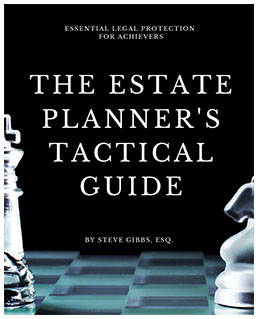What is a Family Trust?
The term “family trust” doesn’t refer to any single, specific type of trust in estate planning, so it can’t be precisely defined in a technical or legal sense. Instead, a “family trust” essentially means a trust in which the beneficiaries are members of the grantor’s family.
At its core, a family trust is a structure that facilitates the distribution of wealth to named beneficiaries, typically including children, grandchildren, spouse, and potentially a holding corporation. The trust operates through a trust agreement where a trustee manages and distributes funds to beneficiaries, usually with wide or absolute discretion over distribution amounts and timing.
When most people say “family trust,” they’re typically referring to a revocable living trust (also known as an “inter vivos trust”), a type of trust that’s popular in estate planning and can serve many of the same functions as a will. However, a family trust does not necessarily have to be revocable and can just as easily be testamentary as living.
Living vs. Testamentary Family Trusts
There are dozens of different types of trusts, but the two main categories relevant to family trusts are living trusts and testamentary trusts.
Living trusts are created while the grantor (the person transferring property into the trust) is still alive. With a living trust, the grantor can also serve as trustee (the person who administers the trust) and be a beneficiary (the person who receives the benefits of the assets in the trust). This allows the grantor to transfer legal ownership of the corpus (the assets held in the trust) while still retaining effective control and receiving the benefits of the property. If the grantor serves as trustee, the declaration (the document that establishes the trust and sets out its terms) designates a successor trustee to take over administration of the trust upon the grantor’s death.
Testamentary trusts, on the other hand, do not become effective until after the grantor’s death. The trust is established in the grantor’s will or incorporated within the will by reference, and the trust’s corpus is composed of estate assets. The grantor of a testamentary trust cannot be trustee or a beneficiary because, by definition, the grantor will no longer be living when the trust technically comes into existence.
A family trust can be either a living trust or a testamentary trust, depending upon the grantor’s objectives. A living family trust might involve a married couple serving as co-trustees of a trust that holds title to their home until both have passed on, at which point a successor trustee transfers title to their children outside of probate. Or, a grantor could fund a testamentary family trust with life insurance proceeds earmarked for the care of minor children until adulthood.
THE ULTIMATE FREE DOWNLOAD
The Estate Planners Tactical Guide
Essential Legal Protection for Achievers

Key Roles in a Family Trust
Understanding the relationship between parties in a family trust is essential:
- Grantor/Settlor: The person who creates the trust and transfers assets into it. Once the trust is established, the settlor typically has minimal ongoing involvement in a irrevocable trust.
- Trustee: The person who holds legal title to the trust assets and manages them according to the trust agreement. Trustees have fiduciary responsibilities to the beneficiaries.
- Beneficiaries: The individuals who have beneficial ownership of the trust assets and receive distributions according to the terms of the trust.
This structure effectively separates legal ownership (held by the trustee) from beneficial ownership (held by the beneficiaries), creating unique advantages for asset protection and distribution.
Advantages of Family Trusts
Privacy and Avoidance of Probate
A chief benefit of living trusts is that they can avoid the probate process altogether. When an asset is transferred into trust, the trust itself holds legal title, even if the grantor is the trustee. Because the grantor no longer technically owns the asset, when he or she dies, the asset is not within the estate and can therefore be transferred without going through probate.
Instead, a successor trustee simply disburses assets as directed in the declaration. This can save time, reduce administrative fees and potential legal challenges, and, perhaps most importantly, protect family privacy.
Probate can be expensive and it is public; anyone can review a recorded will or probate court records. Trusts remain private other than to the extent a memorandum of trust and any deeds transferring real estate to the trust must be recorded.
Importantly, testamentary trusts do not avoid probate. Assets assigned to fund a testamentary trust first pass through probate and then become property of the trust. This doesn’t mean testamentary trusts aren’t useful, just that they don’t offer the same privacy advantages as living trusts.
Increased Flexibility and Control over Distributions
If privacy is not much of a concern, then flexibility is where trusts really prove their value. With an ordinary will, an asset is bequeathed to an heir, and, after the testator dies, the executor of the will follows the guidelines laid out in the will and passes along the assets to the heir, under the discretion of the probate court. And that’s the end of the testator’s control. The grantor of a trust, though, has considerably more say.
With a testamentary family trust, the grantor can declare terms providing for greater certainty as to a loved one’s long-term support. Let’s say you have a minor child, or a disabled dependent, or a relative who you love with all your heart but who you know is terrible with money, i.e. “spendthrift.”
You could use the proceeds of a life insurance policy (or any other assets) to fund a testamentary trust providing for your child’s care until adulthood, or a special needs trust that supports the disabled dependent without affecting his or her Medicare eligibility, or a spendthrift trust that ensures a loved one has enough money to live on but can’t waste it all on extravagances. If needed, you could establish all three testamentary family trusts in a single will.
Living trusts also allow for flexible disbursal of assets. Along with designating the successor trustee, the trust’s declaration provides direction to the trustee as to how assets are disbursed. (But make sure you properly fund the living trust.)
If your primary concern is just avoiding probate, you could direct the trustee to distribute assets to beneficiaries as soon as practicable after death. But you can also have the trustee make periodic disbursements over a certain number of years or, if the corpus consists of profit-generating assets like stocks or rental properties, direct the trustee to manage the assets in trust and disburse profits to beneficiaries.
Asset and Creditor Protection
Because a trust holds assets in the names of beneficiaries rather than giving them direct ownership, this structure can provide significant creditor protection. In the event where a creditor or another person sues a beneficiary, they may not be able to come after the assets that are held in the family trust for the benefit of the beneficiary.
This protection may also extend to marital breakdowns. Since beneficiaries do not legally own the assets held within the family trust, in the event of a separation, these assets may not become subject to division under a separation agreement.
Tax Benefits
Estate taxes have become less of an issue due to recent increases in the allowable exemption. However, if estate taxes are a concern, a family trust can be used to decrease the size of an estate and thereby reduce or eliminate estate taxes.
Importantly, to avoid estate taxes, the trust must be irrevocable, which means the grantor can no longer remove assets or change the trust’s terms after it is created. Assets held in a revocable trust are considered still within the grantor’s taxable estate as far as the IRS is concerned.
Bypass Trust
A tax-bypass trust, also called an “AB trust” or just “bypass trust,” allows married couples to maximize each spouse’s exemption and thereby reduce estate taxes. The mechanics are a little complicated, but what it boils down to is that the first spouse to pass away transfers assets in the amount of the maximum exemption to an irrevocable trust and the remainder to the other spouse. When the second spouse dies, the trust property is distributed to beneficiaries outside of the surviving spouse’s estate. Since both spouses received the maximum exemption, a bypass trust allows the couple to transfer assets to their children with the lowest possible estate tax.
Additional tax advantages include:
- Assets in the trust avoid probate fees, which can amount to 1.4% of total assets in some jurisdictions.
- Income splitting opportunities, where income is distributed among beneficiaries who may be in lower tax brackets, resulting in lower overall taxation than if a single high-income individual received all the income.
- The multiplication of lifetime capital gains exemption through properly structured family trusts.
- Prescribed rate loan strategies for additional tax advantages.
It’s worth noting that any property retained within a trust is typically taxed at the highest marginal rate, making it beneficial to distribute assets to beneficiaries in a timely manner. Trusts often function as conduits, allowing trustees discretion in how assets are divided among beneficiaries, rather than as long-term holding structures for assets.
Corporate Asset Protection
A family trust can hold shares in a privately held family corporation, allowing income to flow through the trust to beneficiaries according to the trustee’s discretion. This structure provides advantages over making children or grandchildren direct shareholders, as direct shareholders would have say in management and operations of the company.
Using a trust as a shareholder helps retain control over family assets while providing flexibility in distribution. Family trusts can be brought in as shareholders through a transaction called an “estate freeze,” which can be an effective strategy for transitioning business ownership while minimizing tax implications.
How Does a Family Trust Actually Work in Practice?
Let’s consider how family trusts work in practice, using a revocable living trust, the most popular family trust, as an example.
Say you and your spouse want to convey all of your property to your two children in equal shares, and you want to avoid probate and make sure the youngest child, still a minor, has a college fund.
You start by creating a revocable living trust and transferring all or a substantial part of your assets to the trust. You need to be sure you are funding your living trust correctly to formally transfer the assets, describing property in the declaration is not enough.
So, you will need to record a quit-claim deed for any real estate and sign over the title to any personal property like vehicles.
In case you missed anything, you also execute a pour-over will transferring any previously unconveyed property to the trust. You also name the trust as the beneficiary of a whole life insurance policy with a death benefit sufficient to pay for the younger child’s education.
The declaration names your spouse and you as trustees and beneficiaries, so you continue to control and enjoy the benefits of property in the trust during life. Upon the first spouse’s death, the declaration makes the surviving spouse sole trustee. Then, upon the second spouse’s death, a trusted friend or relative will serve as successor trustee. And, of course, your children are both beneficiaries.
The declaration directs the substitute trustee, after taking over, to distribute half of the trust’s assets—excluding the life insurance proceeds—to the older child, a responsible adult who has finished college. Because the assets are in trust, the trustee can make the distribution without going through probate.
Now, the trustee can use the insurance proceeds to pay for the younger child’s education expenses and manages the remainder of the corpus for the child’s benefit, making disbursements as needed to ensure he or she is comfortable and has adequate spending money. When the child reaches adulthood and finishes school, the trustee will disburse the remainder of the assets and the trust will be dissolved.
Conclusion
This scenario, though simplified, shows how family trusts can provide flexibility and control to ensure seamless transfer and responsible use of assets, with the added bonus of avoiding probate and the accompanying loss of privacy.
Family trusts offer significant advantages for wealth transfer, asset protection, and tax planning. They create a mechanism for controlling how your assets are distributed and used after your death, provide protection from creditors, and can significantly reduce tax burdens through various strategies.
Though immensely useful, family trusts can also be highly complex. If you’re considering a family trust, consult with an estate planning professional with the experience and know-how necessary to tailor the trust to your family’s specific needs. The right structure can create a financial legacy for your family for years to come.





